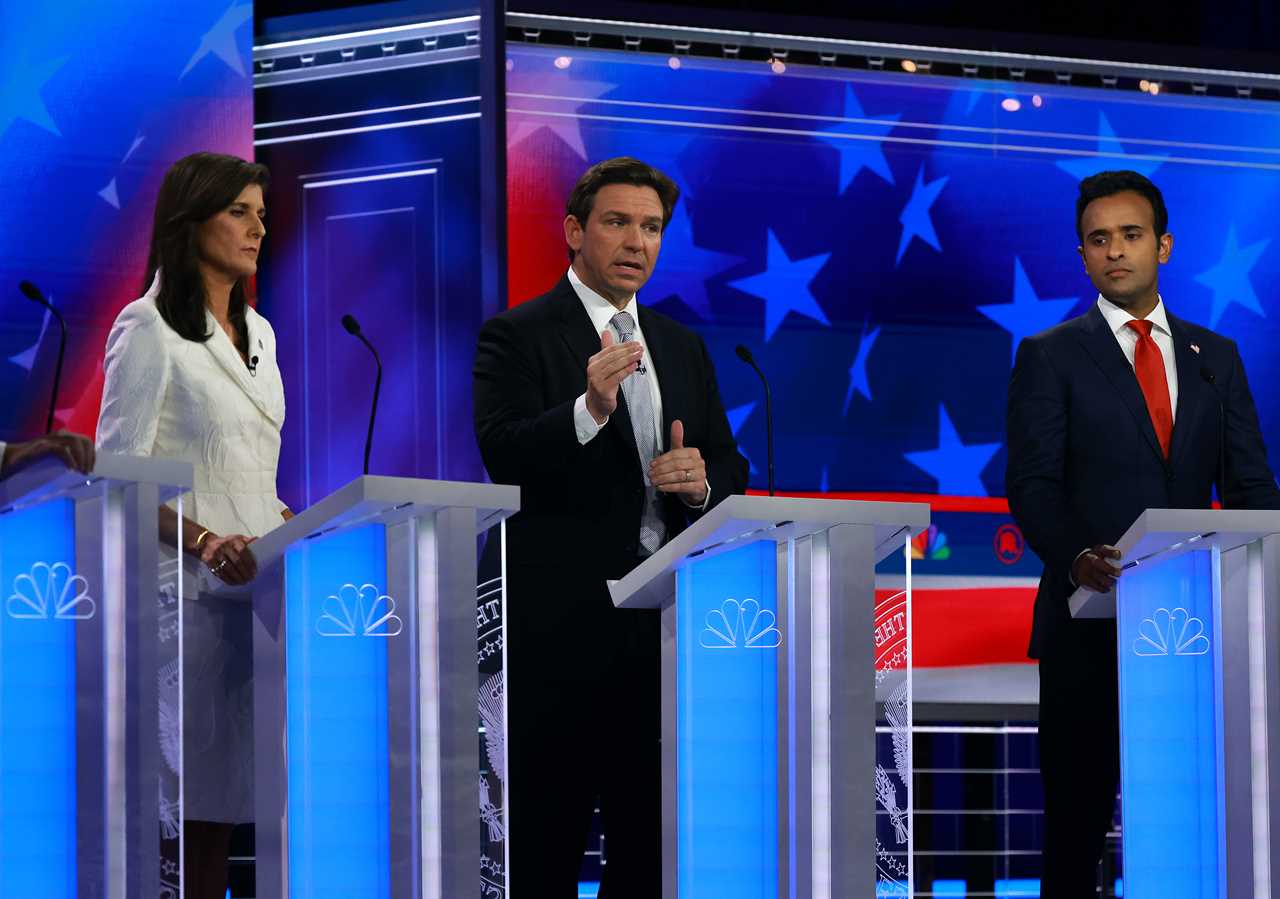
Nikki Haley was at just 3 percent when she got on a debate stage in late August and started taking shots at her rivals.
Her poll numbers immediately began to rise. Fifteen weeks later, the three debates so far have reordered the Republican presidential primary field — most notably propelling Haley out of a distant seventh place.
On the eve of the fourth debate Wednesday night at the University of Alabama, the data is clear: Haley’s rise can be clearly traced to her performance in the first three meetings between the candidates, as can Vivek Ramaswamy’s decline. Though he remains in second place, Ron DeSantis’ once-promising candidacy has stalled.
But former President Donald Trump’s grip on the nomination has only strengthened, undisturbed by the debates ostensibly aimed at helping pick a nominee. While it wasn’t obvious at first that the former president’s decision to skip the debates would pay off, there’s little doubt that Trump is more likely to be the GOP nominee now than when his rivals first appeared on stage without him in late August.
Ahead of the fourth debate Wednesday night, here are the four big ways the debates have changed the race for the Republican nomination:
Nikki Haley rises
On Aug. 23, the day of the first debate in Milwaukee, Haley was mired in seventh place, behind two candidates who aren’t even running anymore: former Vice President Mike Pence and Sen. Tim Scott (R-S.C.).
But the former South Carolina governor and Trump’s one-time ambassador to the U.N. has been on a steady rise since. By the time of the second debate a month later, Haley was in fourth place, nearly doubling her support from 3.3 percent in August to 6.2 percent on Sept. 27, according to FiveThirtyEight’s national polling average.
Her rise didn’t stop there: She was at 8.7 percent on the day of the third debate and enters the fourth debate at 10.5 percent. And it can be tied directly to the debates.
Haley has consistently polled near the top of the Washington Post, FiveThirtyEight and Ipsos post-debate reaction polls. Haley was Republicans’ third choice out of eight candidates for best performance at the first debate, second choice out of seven for the second debate and first out of five for the third debate.
Ramaswamy falls
The debates have been a millstone around Ramaswamy. The combative first-time candidate entered the first debate at 11.6 percent, a clear third choice behind Trump (51.9 percent) and DeSantis (14.2 percent).
But the more Republican primary voters see of him on the debate stage, the worse he does.
He’s lost the majority of his supporters, dropping to 6.5 percent before the second debate, 5.3 percent before the third and 5.2 percent now.
If the goal was simply to get attention from the debate stage, Ramaswamy succeeded. Google Trends data shows a clear, multifold spike in search inquiries about him the day after the first debate.
But his performance was polarizing. In the FiveThirtyEight/Washington Post/Ipsos post-debate poll, Ramaswamy placed second among respondents asked who did the best — and fourth on the list of those who did worst.
Trump builds his lead
Skipping the first debate was not without risk for Trump, who could’ve seen one of his competitors emerge as a clear alternative to the controversial and criminally indicted former president.
Instead, each debate has vindicated his decision. Not only has Trump maintained his lead while the candidates shift around under him, he’s grown his vote share, moving from 51.9 percent in the national polling average on the eve of the first debate to 59.2 percent now.
That phenomenon extends to the early states, though Trump’s vote shares there are smaller. Trump is up from 39 percent in FiveThirtyEight’s Iowa average on Aug. 23 to 44.6 percent now. In New Hampshire, he’s up from 39.8 percent on Aug. 23, to 44.7 percent now.
Unexpected victories by DeSantis or Haley in Iowa or New Hampshire continue to be the only threat to Trump that is even slightly credible, but that gets less and less likely as Trump’s share of support grows, even while he’s absent from the debate stage.
DeSantis stalls
The numbers are remarkably steady: 14.2 percent. 13.1 percent. 14.1 percent. 13.1 percent.
Those are DeSantis’ average national poll numbers, according to FiveThirtyEight, on the eve of debate Nos. 1 through 4, respectively. And while one way to think about those figures would be that the Florida governor has arrested the slide that followed his campaign rollout — it also means DeSantis isn’t benefiting as the other non-Trump candidates, like Scott and Pence, drop out.
He entered the field arguing that it was “a two-man race” between himself and Trump. Now, he finds himself fighting for second place.
----------------------------------------
By: Steven Shepard
Title: The debates mattered. They just didn’t knock out Trump.
Sourced From: www.politico.com/news/2023/12/06/2024-gop-debates-trump-00130009
Published Date: Wed, 06 Dec 2023 05:00:00 EST






